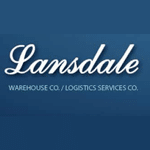White Paper: How to Choose the Right WMS
Choosing the right Warehouse Management System (WMS) requires evaluating where your company is now and where it wants
to be in the future. While price and support are major considerations, other factors include how well-tailored the WMS is to your capacity, and what features match up with your goals. Sometimes how you’re doing today is not as important as how you want to operate tomorrow!
The potential benefits of incorporating a WMS are many: It increases visibility and traceability of inventory, reduces picking errors, results in fewer returns, strengthens efficiency of your workforce, reduces paperwork, and much more. But what questions should you ask yourself and your potential software partners to make sure you pick the right one? Start with these:
1. What features are essential and which ones are not?
You want to make sure you get a system that is scaled to your business. To justify the cost, make a list of all the features that are essential for what you do and stick with a system that will deliver each one. A WMS system does more than control inventory; it helps automate your warehousing operation, so figure out which components of your future system are must-have versus nice-to-have and go from there. Remember that “off-the-shelf” RFP templates may not match your requirements.
2. What is the return on investment (ROI)?
In order to establish a price range for how much you want to spend you need to factor in the ROI potential of each system. Think about the potential for the WMS to improve inventory accuracy, reduce errors, create efficiency among your labor force, and better customer service. Some WMS systems will play a greater role in reducing your reliance on expensive equipment and a big labor force. Calculate the efficiencies each WMS will create depending on what they offer and how it aligns with what you do. Remember: these need to be your numbers and not the vendor’s. Prioritize the potential ROI in terms of which area represents the best payback with the least amount of risk.
3. What are the different costs involved?
WMS vendors tend to set pricing into four main categories, so it is important to factor all of them when going through this process. The greatest cost can be the software licenses needed to run the system; some vendors have different models for pricing. There are also costs for project management and support, and development costs such as creating interfaces to third-party systems. What are the costs for extra users and modules? Figure out which prices are fixed, and which are variable, get quotes for all, and summarize all the costs on a spreadsheet to estimate your costs between the year of purchase and five years out.
4. What are the ecommerce capabilities? What about reports?
If your company is considering ecommerce, or is already involved online, look for a flexible WMS that can manage a spectrum of operational strategies. Online retail fulfillment requires different picking strategies and special handling, so you want to make sure your WMS has the capacity for both. You’ll also want to ensure that your vendor’s WMS has unlimited reporting capabilities so you can track labor productivity and tracking information. Request samples of reports from each vendor you are considering.
5. What about training and support?
Each vendor may have different metrics for how it provides (and prices for) ongoing training and support. This is important information to get early because it’s very likely you’ll still need to rely on their support team long after the time of purchase. Find out the costs and policies for maintenance, upgrades, and support. What are the response times for questions? Is onsite support available? Does the vendor supply an online library of information for troubleshooting? Make sure you’re familiar and comfortable with these terms before purchasing WMS software.
6. What is your vendor’s track record?
Now is the time to evaluate the history and capability of all the vendors you are considering. Each one is different depending on the kinds of clients they serve, how long they’ve been in business, and what they offer in support and development. Draft a document that describes your business, warehouse capabilities and vision for the future, and then describe what you want to achieve with a WMS. From there, request that your vendor provide its company history, number of sites using the same WMS product you are considering, a customer list, development plans, support coverage, and daily rates (if any) for support. Focus on their track record, read case studies and reviews of their software and even speak with their customers whose businesses are similar to your own to gain additional insight.
7. Do I buy or rent my WMS?
Most WMS vendors require that you purchase the software and hardware outright and there are many obvious advantages: Greater support, fewer threats to data security, stronger integration, and more. However, some vendors provide the Software-as-a-Service (SaaS) model for start- ups, or small-to-medium-sized companies. This model involves the client paying for modules while renting the overall system. There is a lower cost of entry and reduced costs, but this model tends to benefit companies also looking for a temporary solution.
8. Can I get a site visit or demonstration?
Ask for a demonstration of the WMS that is tailored to your operation. If certain features are important to you, ask for a demonstration that showcases primarily those features. Some vendors offer reference site visits. This gives you the opportunity to visit one or more of their clients to see the fully implemented WMS in action. Ask for more than one site and pick those that are similar to yours in size and process. This will give you an opportunity to talk with others about how well the vendor worked within a set budget and time frame.










